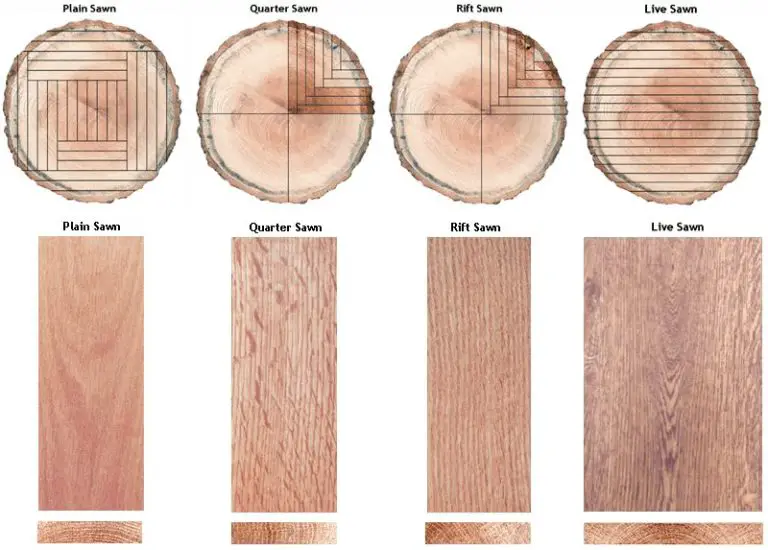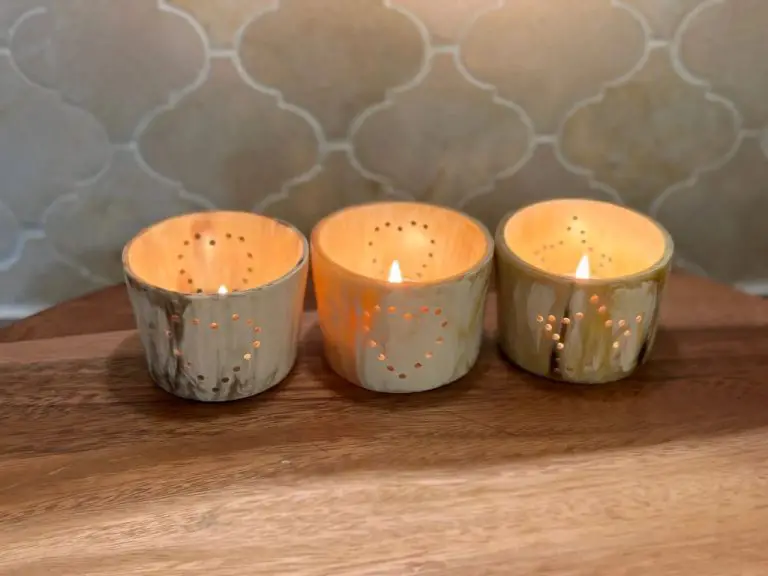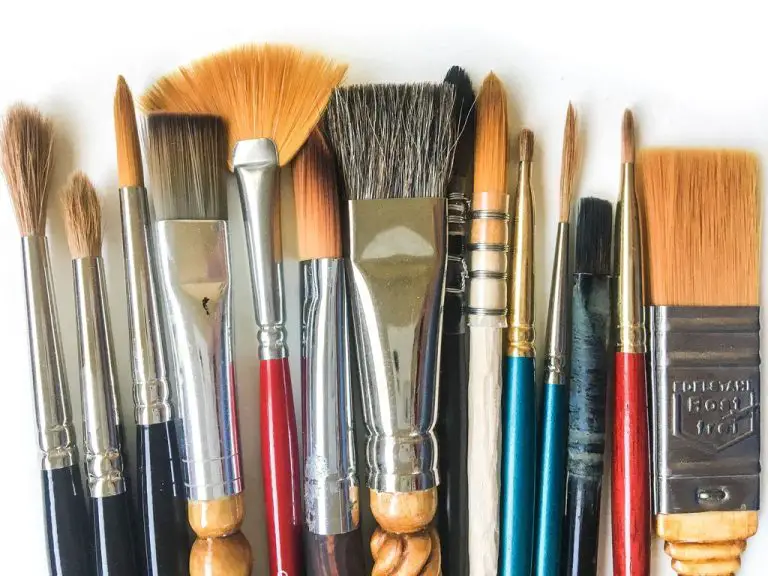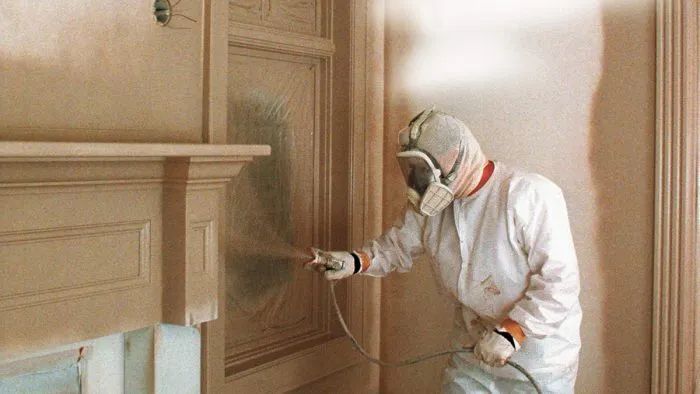What Is Slab In Art?
Slab pottery refers to a hand-building technique in ceramics where slabs or sheets of clay are used to construct vessels, sculptures, and other ceramic objects. The earliest evidence of slab-built pottery dates back 18,000 years ago to ancient Jōmon culture in Japan, where slab coils were used to create flame-like ornamental protrusions on vessels (Wheelandclay.com: https://wheelandclay.com/blog/slab-pottery/). Slab building techniques were also used in ancient Mesopotamia and pre-Columbian cultures in the Americas.
The basic process involves flattening slabs of clay and then joining them to create the desired shapes. Slab pottery allows for asymmetry and complex shapes not easily made on a pottery wheel. It emerged across many cultures as an intuitive and accessible hand-building technique using simple tools and materials. The modular nature of slabs enabled both ornate and utilitarian vessels to be constructed relatively quickly compared to other methods.
Though pottery wheels enabled mass production, slab building continued in many regions from the Near East and Asia to pre-colonial Americas and Sub-Saharan Africa. Today it remains a staple hand-building technique for studio potters and ceramic artists around the world.
Making Slabs
Slab pottery is most commonly made using clay that has some grog or sand added to it. These additives prevent cracking and make the clay stronger when rolled out thinly into slabs (Gathered, 2023). Some common clays used for slab building include stoneware, porcelain, and terracotta. The clay should be kneaded well to mix in the grog and sand particles evenly and remove any air bubbles before rolling out slabs.
Slabs can be rolled out using a rolling pin on a flat surface dusted with clay or using a slab roller. Roll the clay out evenly to the desired thickness, usually 1/4 inch to 1/2 inch thick. Use guides like rulers or yardsticks placed on either side to achieve an even width and thickness (Ceramike, 2022). Work from the center outwards, applying even pressure as you roll. Let the slab rest and stiffen slightly before moving it.
A variety of textures can be imprinted into the slab clay surface before it dries using found objects, stamps, stencils, or by carving patterns. Texture adds visual interest and distinguishes different slab sections. Consider pressing in burlap, lace, leaves, shells, or netting for organic patterns. Use clay tools, combs, or rollers with patterns for geometric textures.
Cutting and Shaping
Once slabs have been rolled out to the desired thickness, the next step is cutting and shaping them into the forms required for the project. There are several techniques potters use for cutting slabs:

Cutting slabs with wire – A wire tool, usually with wooden handles on each end, can be used to slice cleanly through a slab. The wire easily cuts through the clay. Using a straightedge as a guide allows for straight cuts. The wire tool can also be used freehand for curved cuts.
Using templates – Templates made out of wood, plastic or cardboard can be placed on top of slabs and used to trace smooth cutting lines. A knife or wire tool is used to cut along the outlines of the template. Templates are useful for getting consistent sizing and smooth curves when cutting multiple pieces.
Freehand cutting shapes – With practice, potters can cut slabs freehand using knives, loop tools or fettling knives. This allows cutting custom asymmetrical or organic shapes. Marks can be made in the clay as cutting guides. A steady hand and practice help get clean cuts when eyeballing shapes.
These cutting methods allow potters to cut slabs into any shape imaginable. From precise geometric tiles to organic freeform serving platters, slab building opens up creative possibilities through cutting and shaping the clay.
Joining and Attaching
There are several techniques for joining slab pieces together to form a cohesive whole. One of the most common methods is the score and slip technique. This involves using a tool to score or scratch the surfaces of the slabs where they will be joined. The scored lines provide more surface area for a better bond. Next, watered down clay called slip is applied to the scored areas before pressing the pieces together. The slip acts as a glue between the slabs.
Another option is to use pure clay slurry instead of slip. This very wet clay mixture helps bridge the gap between slab pieces. As it dries, it forms a strong connection. Some artists also add clay coils between slab pieces, blending the coils into the slabs. The coils meld with the slabs during drying, forming an integrated bond.
In general, joining should be done with some moisture present, either through scoring and slipping or applying slurry. Allowing the clay to dry too much before joining can weaken the bond. Proper joining technique helps create a unified slab built vessel or sculpture.
Source: Ceramics Vocabulary
Texturing and Stamping
Texturing and stamping add visual interest and dimension to slab built pieces. There are several techniques for imprinting patterns and textures into the clay:
Pressing found objects into the clay can create unique imprints. Leaves, lace, nuts, bolts, keys, and other household items can be pressed into the soft clay surface. According to one reviewer, “I love this mat! It’s very large and the pattern it makes when I’m texturing slab pottery is beautiful and it lifts off clean!” (Source)
Using texture mats and stamps allows repeatable patterns. Texture mats come in diverse materials like silicone, rubber, and wood. Simple geometric patterns, simulated wood grain, brick, bark, and other textures can be pressed into the clay. The textures can be subtle or dramatic depending on the depth of impression.
Carving patterns into the clay surface provides complete control and customization. Markings can be carved with various tools like loops, ribs, wooden sticks, clay cutters, and more. The carvings can be minimal scoring or deep subtractive carving depending on the desired effect.
Drying and Curing
Proper drying and curing are crucial steps for slab pottery. After forming slabs and assembling them into the desired shapes, the clay must be allowed to dry slowly and evenly to prevent cracking and warping.
Air drying slab pieces can take several weeks, as the moisture must evaporate gradually from the clay. Pieces should be kept away from direct sunlight or heat, which can dry the exterior too quickly. Slabs can be wrapped in plastic while working to slow moisture loss. A humid environment also helps prevent excessively rapid drying.
Many potters use electric kilns to carefully control the drying and firing process. Kilns allow adjusting the temperature curve specifically for slab pieces to remove moisture before bisque firing. Faster drying in a kiln reduces the risk of cracks and damage. Kiln drying cycles slowly bring the temperature to 180-200°F to evaporate moisture before ramping up for bisque firing.
Bisque firing slab pieces to around cone 04-06 further hardens the clay through sintering. This makes the pottery less porous and ready for glazing and decorating before a final firing.
Decorating
Glazing is one of the most common decorating techniques for slab pottery. Glazes come in various colors and textures and are applied in thin layers using brushes, sponges, pouring, or dipping. When fired, the glaze melts and forms a glossy coating. Underglazes can also be used before applying a clear glaze to add colored designs https://www.pinterest.nz/belinda2764/lounge/. Popular glazing styles for slab pieces include dripping, pooling, and layering contrasting colors.
Another decorating technique is painting directly onto the raw clay using slips, underglazes, and glazes. Slips with added colorants like stains, oxides, and pigments allow creating designs in different colors. The surface can be textured by incising patterns before painting as well. Underglazes are also commonly hand-painted onto greenware and then fired before applying a glaze. Painterly effects like blending and bleeding colors can be achieved.
Staining slab clay is done by applying colored stains directly onto the piece and letting it soak in for a mottled effect. Stains often use compounds like iron, copper, and cobalt. The piece can then be fired, leaving the stain color permeated through the body. Wax resist techniques may also be used by applying wax before staining to create designs https://www.pinterest.com/ab85522893/%EA%B3%A0%EA%B0%80%EA%B5%AC/. Stained slab pieces showcase the natural clay color alongside areas of saturated stain.
Notable Slab Artists
Some of the most well-known slab pottery artists include:
Peter Voulkos (1924-2002) is considered one of the most influential ceramic artists of the 20th century. He is credited with transforming the perception of ceramics from craft to fine art. Voulkos experimented extensively with slabs, often combining wheel-throwing and handbuilding techniques. He would rip apart, reassemble, and sculpt slabs into dynamic, sculptural forms. His slab platters exhibited torn, gnarled, and reassembled edges that challenged traditional pottery aesthetics. Voulkos taught at the Otis Art Institute and later UC Berkeley, profoundly influencing the ceramic arts community. More on Peter Voulkos.
Betty Woodman (1930-2018) was an American ceramic sculptor known for her innovative slab-built vessels. She often incorporated vibrant glazes, drawings, prints, and painterly effects onto her pottery. Woodman transformed utilitarian vessels into whimsical sculptures by slicing, cutting, and reconfiguring slabs. She was influenced by Italian Metaphysical still life paintings in her bold compositions. Woodman’s work blurred the line between fine art sculpture and functional pottery. More on Betty Woodman.
Robert Turner (1913-2005) was an influential teacher and studio potter who specialized in slab-built stoneware vessels. His technical contributions include pioneering “paperclay” techniques by adding paper pulp to clay to increase its strength and flexibility. Turner built coiled, pinched, and slab vessels with asymmetrical forms inspired by historical Asian ceramics. His neutral glazes and earthy surfaces highlighted the purity of the clay. Turner taught ceramics at Sacramento State University for over 30 years. More on Robert Turner.
Contemporary Uses
Slab techniques continue to be utilized by contemporary ceramic artists in creative and innovative ways. Some of the most common contemporary uses of slab construction include:
Sculptural pieces – Many contemporary ceramic sculptors work in slabs to create intricate and elaborate free-standing sculptures. Slabs allow more control and stability when crafting large-scale sculptures compared to other handbuilding techniques. Contemporary slab sculptors like Peter Voulkos and Viola Frey pushed the boundaries of what could be achieved with slab sculpture.
Architectural ceramics – Slabs can be an ideal technique for creating ceramic tiles, murals, fountains and other architectural elements. The flat slabs allow for uniformity and stability in large installations. Architectural ceramic artists may pressed textures into slabs or collage slabs together to create complex public artworks.
Mixed media – Slab construction also lends itself well to mixed media art that incorporates ceramic elements. Slabs can be combined with other materials like wood, metal, glass and fiber to create multimedia sculptures, collages, and assemblages. Contemporary artists like Brigitte Zieger utilize slabs in inventive mixed media works.
In summary, slab techniques continue to offer versatility and creative potential for ceramic artists working in sculpture, architecture, and mixed media.
Impact and Significance
Slab pottery techniques had a major impact on the evolution of ceramic arts. The slab method enabled artists to expand the sculptural possibilities of clay in new ways.
According to The Spruce Crafts, slab building opened up new creative avenues that were not possible with wheel throwing alone. Artists could now craft geometric shapes, intricate surface textures, and complex multi-part forms. This allowed more versatility and freedom in ceramic sculpture and vessel design.
Slabs also played a key role in the ceramic arts movement of the 1960s and 70s. During this period, artists like Peter Voulkos pushed the boundaries of traditional pottery by using slabs to create abstract, free-form sculptures. Voulkos and others demonstrated slabs as a means for clay to become a fine art material rather than solely a craft technique.
Today, slab building continues to offer artists a direct way to realize creative visions not achievable through other methods. The slab technique empowers ceramicists with limitless ways to explore form, surface, texture, and space.






